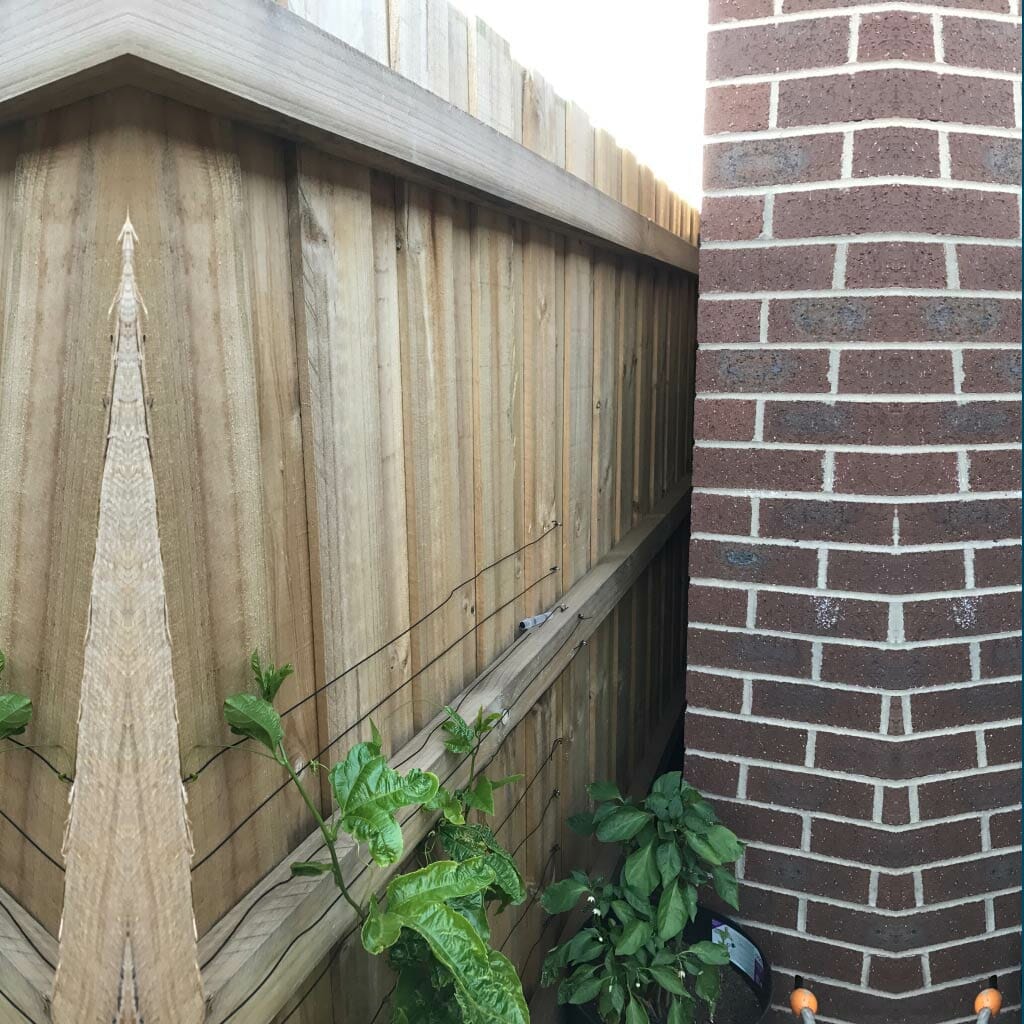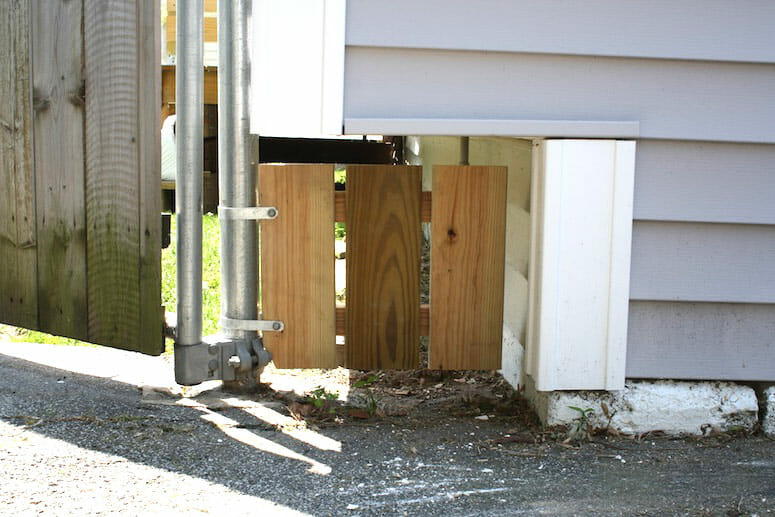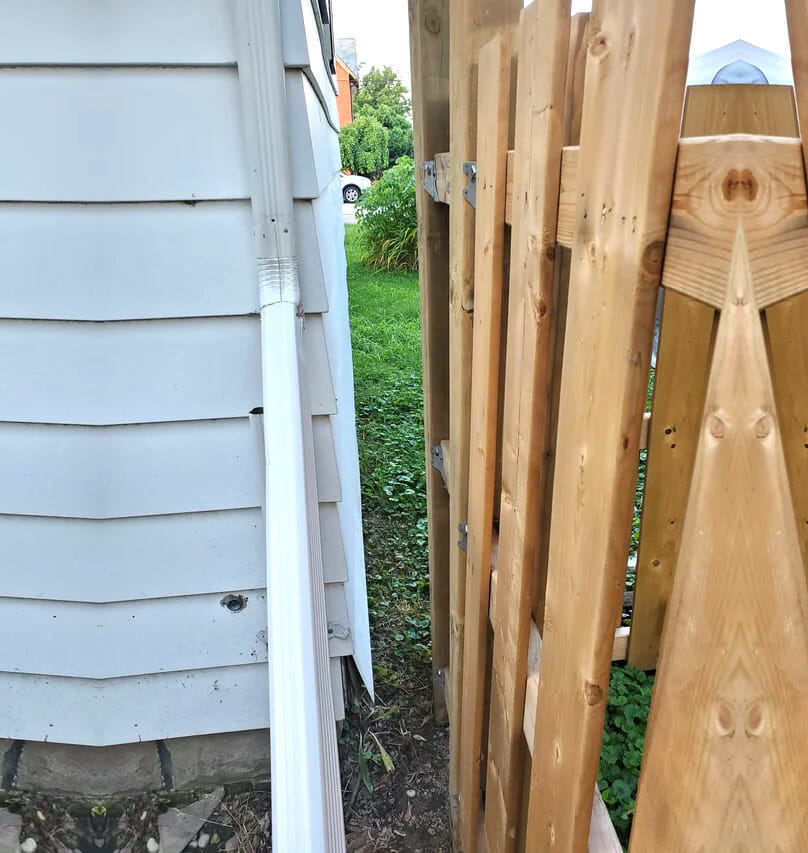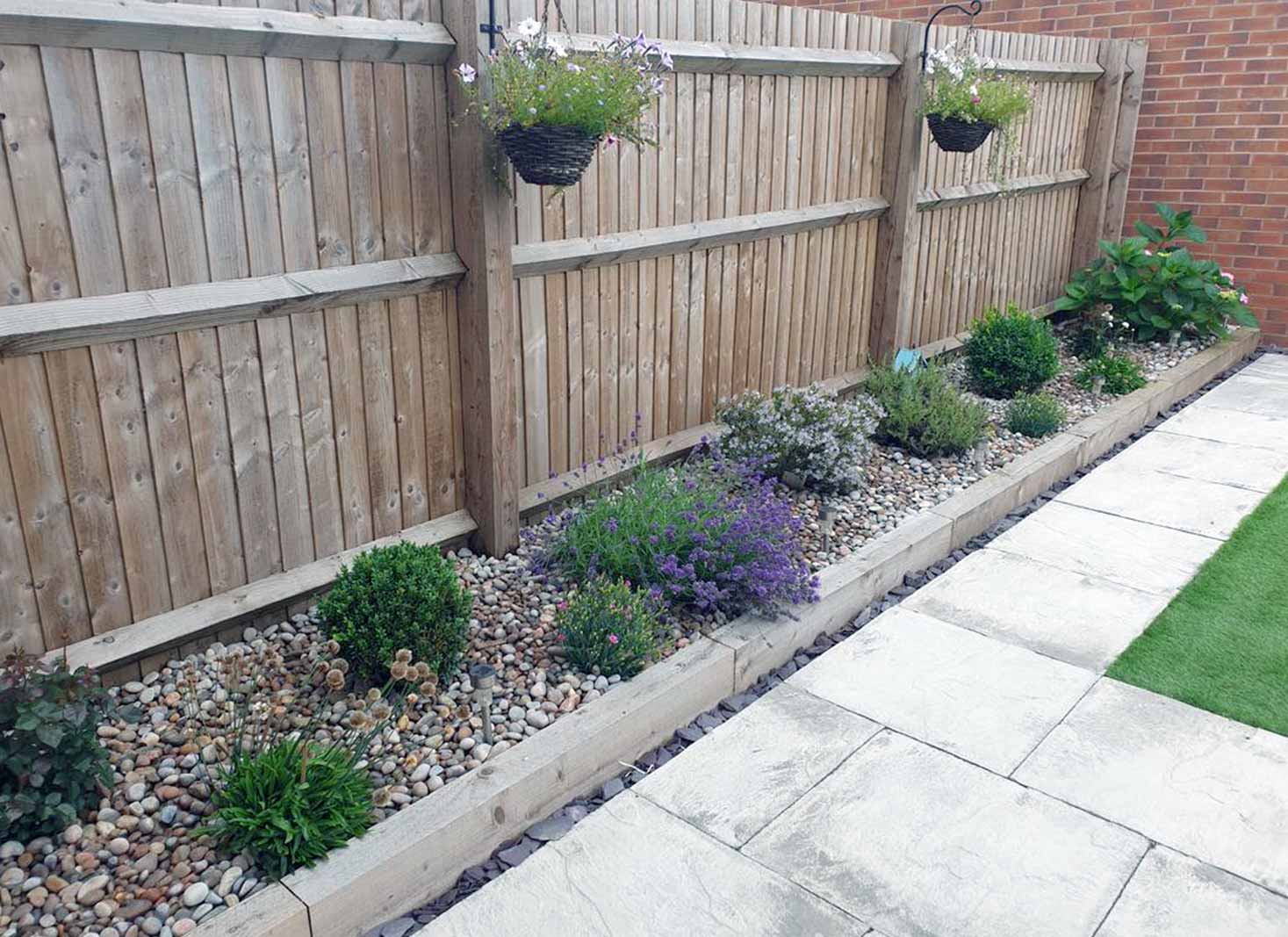Have you ever noticed the concerning gap between your house and the fence post, exposing your property to unwanted guests or prying eyes? You’re certainly not alone.
There are multiple ways to fill the gaps between fence posts and your house, such as using wooden extensions, metal bars, plant-based solutions, decorative elements, or even gap-filling with rocks and gravel.
In this article, we will explore a variety of creative ways to fill these gaps to enhance your home’s security and privacy and also enhance the overall aesthetic of your fence.
Filling gaps with wooden extensions

Wooden fences are a practical and customizable method for filling gaps between fence posts and houses.
By matching the fence material and properly cutting and installing extensions, you can create a seamless appearance that maintains the integrity and style of your fence.
Matching fence material
When it comes to filling gaps with wooden extensions, finding the right fence material is vital. To create a seamless look, you need to consider the dimensions, shade, and texture of the existing fence.
Before you head to the store, measure the length, width, and height of your current fence post, and take a photograph of it on your mobile device. This will help you identify and purchase the appropriate material to match your fence.
However, sometimes it’s not as simple as finding an exact match off the shelf. You may need to apply paint or stain to the new material to create a better match for your existing fence.
Cutting and installing extensions
Once you have the matching fence material, it’s time to cut and install the wooden extensions. Begin by measuring the desired length of the extension and marking it with a pencil or marker.
Use a saw or a jigsaw to cut the material, being meticulous with the cutting process to ensure a neat and accurate cut.
With the extension cut to size, dig a hole for the new post and place it inside. Fill the hole with dirt or concrete to secure the post in place. Then, use screws or nails to affix the extension to the existing fence.

Securing extensions
Securing the wooden extensions to the fence post and house is crucial for a durable and long-lasting solution. The type of fasteners you choose depends on the type of fence.
For chain-link fences, paired brackets are recommended, while for wood fences, long and sturdy screws are the best choice to secure the dummy post to the main post.
In addition to using appropriate fasteners, ensure that the extension is securely clamped or nailed in place while adding permanent fasteners.
Using metal bars for gap filling
Metal bars offer another effective and durable solution for filling gaps between fence posts and houses, making them suitable for most fences.
This method is particularly popular among pet owners, as it can deter dogs from digging beneath the fence and escaping. With the right metal bars and proper installation, you can create a sturdy barrier that stands up to wear and tear.

Choosing the right metal bars
Selecting the right metal bars for filling small gaps involves considering factors like size, material, and design. The size of the metal bars should be slightly larger than the gap to ensure a secure and stable fit.
For instance, if the gap is situated in an area exposed to moisture, stainless steel or aluminum would be the best material choices.
When it comes to design, choose metal bars that complement the aesthetic of your fence and the surrounding area. For a modern home, metal bars with a sleek and refined design would be an excellent choice.
Installation process
To install metal bars for gap filling, start by marking the corners and gates of the fence line using wooden stakes.
Then, use a measuring tape and marker to indicate the location of each fence post hole. Once the holes are marked, proceed with digging holes to the appropriate depth and width.
Install the metal fence posts by placing them in the holes and filling the holes with dirt or concrete. To secure the metal bars, we recommend using rust-free fasteners or galvanized fence brackets.
Maintenance tips
Maintaining your metal bars is essential for their longevity. Inspect them periodically for signs of wear and tear, and repair or replace any damaged sections as needed.
Additionally, keep the metal bars clean and free of debris to prevent rusting. A simple wipe down with oil and brushing with a wire brush can help keep your metal bars in top condition.
Plant-based solutions for fence gaps
For a more natural and visually appealing solution, consider plant-based options for filling gaps between fence posts and houses.
Hedges, small gardens, or large potted plants can effectively bridge those gaps while adding a touch of greenery to your outdoor space.
Selecting suitable plants
Choosing the right plants for filling fence gaps is crucial for achieving the desired effect. Fast-growing plants like hydrangeas, weigela, and ajuga are recommended for quick coverage.
Plants that can tolerate different light conditions and boast attractive foliage, such as coleus and plectranthus, are suitable options. For shaded areas, consider plants like hydrangea, azalea, ferns, and hostas.
By selecting plants that complement your fence and thrive in the specific conditions of your gap, you can create a lush and visually appealing solution.
Planting and maintenance
Once you’ve selected the right plants for your gap, it’s time to plant and maintain them. Begin by digging a hole deep enough to accommodate the root system of the plant in the gap between the fence post and the house.
Fill the hole with soil and water the plant thoroughly to ensure it establishes itself well.
To promote healthy growth and maintain the desired shape, water your plants regularly and fertilize them as needed.
Pruning may also be necessary to control growth and improve the overall appearance of your plant-based gap-filling solution.
Additional support systems
For some plants, particularly vines, additional support systems like trellises or wires may be needed to help them fill gaps more effectively and maintain a neat appearance.
Stakes, trellises, and cages are commonly used to provide extra support for plants, guiding their growth and ensuring a tidy look.
To use a trellis or cage, simply affix it to a wall or fence and guide the plants to grow up and around it. For stakes, drive them into the ground and tie the plants to them as they grow.
Utilizing decorative elements for gap coverage
If you’re looking for a creative way to cover gaps between fence posts and houses, consider utilizing decorative elements.
From lattice panel installation to unique fence decorations, and even combining various elements for a one-of-a-kind look, decorative solutions can add visual interest while effectively covering gaps.
Lattice panel installation
Installing lattice panels is a simple and attractive way to fill gaps between fence posts and houses.
Start by measuring the gap and cutting the lattice panel to fit. Then, attach the panel securely using screws or nails, ensuring proper alignment and a neat appearance.
Lattice panels not only provide coverage but also add a decorative touch to your fence. They can be painted or stained to match the existing color scheme of your home or garden.
Fence decorations
Hang shelves with potted plants, create a brick lining along the fence, or even construct a 3-D mural using items sourced from yard sales, thrift stores, or during your travels.
These unique decorations not only cover the gap but also add a personal touch to your outdoor space.
When installing fence decorations, be sure to securely attach them to the fence or wall, and ensure they’re weather-resistant if exposed to the elements.
Combining decorative elements
Don’t be afraid to mix and match different decorative elements to create a truly unique and customized solution for filling fence gaps.
You can also consider pairing hanging shelves with brick lining or combining 3-D murals with bird houses filled with birdseed on your cement terrace to enhance your fence design.
Gap filling with rocks and gravel

Rocks and gravel offer a durable and low-maintenance solution for filling gaps between fence posts and houses. This method is particularly useful for gaps close to the ground, where other solutions might not be as effective.
With the right materials and proper installation, rocks and gravel can provide a stable and lasting gap-filling solution.
Selecting appropriate materials
When choosing rocks and gravel for gap filling, consider factors like size, color, and texture. The ideal size of gravel for fence posts is approximately three-eighths of an inch in diameter.
Pea gravel or crushed stone can also be used to fill the gap between the fence post and house, creating a neat and low-maintenance barrier.
When selecting rocks and gravel, also consider the surrounding landscape and choose materials that blend well with the existing environment.
Preparing the area
Before installing rocks and gravel, it’s essential to prepare the area. Start by marking off the designated area and excavating soil to a depth of six inches. This will create a trench that can be filled with rocks and gravel.
If drainage is a concern, dig trenches filled with gravel and line them with landscape fabric to improve water flow.
After that, install a base layer of crushed stone to provide a stable foundation for the rocks and gravel. Compact the base layer using a hand tamper or plate compactor to ensure a firm and level surface for the gap-filling materials.
Installing rocks and gravel
With the area prepared and the base layer compacted, it’s time to install the rocks and gravel. Cover the landscape fabric with 8 to 12 inches of gravel, ensuring even coverage and a neat appearance.
For a decorative touch, top the gravel with rocks or smooth stones that complement the surrounding landscape.
Keep in mind that rocks and gravel may shift over time, particularly in areas with frequent precipitation or persistent pet activity.
FAQ's
The best way to block the gap may be one of the many options available, such as placing dirt or gravel, using wires to seal the gap, adding wooden pockets or a kickboard, building a brick wall, or hedging the fence.
To fill the gap between concrete and a fence, there are several options available.
These include placing dirt or a mound, using wires to seal the fence gap, filling it with gravel, using a bottom lattice, wooden pockets for filling in gaps, adding a kickboard, building a brick wall, and hedging the fence gaps.
The most common materials to fill gaps between fence posts and houses are wooden extensions, metal bars, plant-based solutions, decorative elements, and rocks and gravel.
These solutions will ensure your property line is clearly marked while also providing an aesthetically pleasing appearance.
To ensure a seamless appearance with wooden extensions, make sure to match the fence material, properly cut and install the extensions, and securely attach them to the post and house.
This can be done by measuring the existing fence and cutting the extensions to the same size. The extensions should be attached to the post and house with screws or nails to ensure a secure fit.













